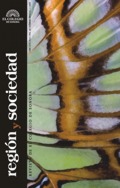 |
 |
 |
 |
 |
 |
 |
 |
 |
 |
 |
 |
Abstract
A defining characteristic of sociocultural epidemiology is the integration of social, cultural, economic, and political processes together with biologic processes in the study of the determinants of health. This implies the need to consider factors defined at multiple levels of organization, ranging from genes to society as a whole. This article discusses methodologic problems that arise in epidemiology (as well as in the social sciences generally) as a result of the presence of multiple levels of organization. The need to jointly investigate (or integrate) factors defined at multiple levels is emphasized. The article concludes with a discussion of the implications of the presence of multiple levels for the study of the social and cultural determinants of health.
References
Benach, J., Y. Yasui, C. Borrell, M. Sáez y M. I. Pasarin. 2001. Material Deprivation and Leading Causes of Death by Gender: Evidence from a Nationwide Small Area Study. J Epidemiol Community Health 55 (4): 239–245.
Bingenheimer, J. B. y S. W Raudenbush. 2004. Statistical and Substantive Inferences in Public Health: Issues in the Application of Multilevel Models. Annu Rev Public Health 25: 53–77.
Diez Roux, A. V. 2007. Integrating Social and Biologic Factors in Health Research: A Systems View. Ann Epidemiol 17 (7): 569–574.
––––––––––. 2002. A Glossary for Multilevel Analysis. J Epidemiol Community Health 56 (8): 588–594.
––––––––––. 2000. Multilevel Analysis in Public Health Research. Annu Rev Public Health 21: 171–192.
––––––––––. 1998. Bringing Context back into Epidemiology: Variables and Fallacies in Multilevel Analysis. Am J Public Health 88 (2): 216–222.
––––––––––, S. Schwartz y E. Susser. 2002. Ecologic Studies and Ecologic Variables in Public Health Research. En The Oxford Textbook of Public Health, editado por R. Detels, J. McEwen, R. Beaglehole y H. Tanaka, 493–508. Londres: Oxford University Press.
DiPrete, T. A. y J. D. Forristal. 1994. Multilevel Models: Methods and Substance. Annu Rev Sociol 20: 331–357.
Duncan, C., K. Jones y G. Moon. 1998. Context, Composition and Heterogeneity: Using Multilevel Models in Health Research. Soc Sci Med 46 (1): 97–117.
Hermalin, A. 1986. "The Multilevel Approach: Theory and Concepts. Population Studies Addendum Manual IX 66: 15–31.
Janghorbani, M., R. B.Jones y R. Nelder. 2006. Neighbourhood Deprivation and Excess Coronary Heart Disease Mortality and Hospital Admissions in Plymouth, UK: An Ecological Study. Acta Cardiol 61 (3): 313–320.
Kreft, I. y J. de Leeuw. 1998. Introducing Multilevel Modeling. Londres: Sage.
Mason, W., G. Wong y B. Entwisle. 1983. Contextual Analysis through the Multilevel Linear Model. En Sociological Methodology, editado por S. Leinhardt, 72–103. San Francisco: Josey Bass.
Morgenstern, H. 1995. Ecologic Studies in Epidemiology: Concepts, Principles, and Methods. Annu Rev Public Health 16: 61–81.
Paterson, L. y H. Goldstein. 1991. New Statistical Methods for Analysing Social Structures: An Introduction to Multilevel Models. British Educational Research Journal 17: 387–393.
Raudenbush, S. y A. S. Bryk. 2002. Hierarchical Linear Models: Applications and Data Analysis Methods. Sage.
Riley, M. 1963. Special Problems of Sociological Analysis. En Sociological Research I: A Case Approach. En ídem, 700–725. Nueva York: Harcourt, Brace, and World Inc.
Rose, G. 1985. Sick Individuals and Sick Populations. International Journal of Epidemiology 14: 32–38.
Subramanian, S. V. 2003. Multilevel Methods for Public Health Research. En Neighborhoods and Health, editado por I. Kawachi y L. Berkman. Nueva York, Oxford.
–––––––––– y I. Kawachi. 2006. Whose Health is Affected by Income Inequality? A Multilevel Interaction Analysis of Contemporaneous and Lagged Effects of State Income Inequality on Individual Self–Rated Health in the United States. Health Place 12 (2): 141–156.
Susser, M. 1994. The Logic in Ecological: II. The Logic of Design. Am J Public Health 84 (5): 830–835.
Tapia Granados, J. 2005. Recessions and Mortality in Spain. European Journal of Population 21: 393–422.
Townsend, P., P. Phillimore y A. Beattie. 1988. Health and Deprivation. Inequality and the North. Londres: Routledge.
Valkonen, T. 1969. Individual and Structural Effects in Ecological Research. En Social Ecology, editado por M. Dogan y S. Rokkam, 53–68. Boston: M.I.T. Press.
Wing, S., E. Barnett, M. Casper y H. Tyroler. 1992. Geographic and Socioeconomic Variation in the Onset of Decline of Coronary Heart Disease Mortality in White Women. Am J Public Health 82 (2): 204–209.
Open access policy
The authors who publish in región y sociedad accept the following conditions:
In accordance with the copyright laws, región y sociedad recognizes and respects the authors’ moral rights, as well as the ownership of property rights, which will be transferred to the journal to disseminate the articles in open access. región y sociedad does not charge the authors for submitting and processing articles for publication.
All the texts published by región y sociedad —with no exception— are distributed under a Creative Commons license 4.0 Attribution – Noncommercial (CC BY-NC 4.0 International), which allows third parties to use the publication as long as they mention the works’ authorship and the first publication in this journal.
The authors can enter into independent and additional contractual agreements for the nonexclusive distribution of the version of the article published in región y sociedad (for instance include it into an institutional repository or publish it in a book) as long as they clearly indicate that the work was published for the first time in región y sociedad.
For all the above, the author(s) must send the Letter of transfer of property rights of the first publication duly filled in and signed by the author(s). This letter can be sent by e-mail as a PDF to: region@colson.edu.mx






